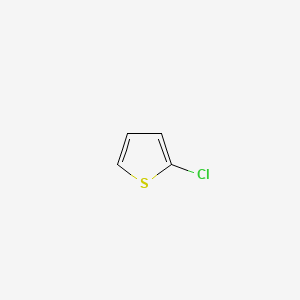-
Categories
-
Pharmaceutical Intermediates
-
Active Pharmaceutical Ingredients
-
Food Additives
- Industrial Coatings
- Agrochemicals
- Dyes and Pigments
- Surfactant
- Flavors and Fragrances
- Chemical Reagents
- Catalyst and Auxiliary
- Natural Products
- Inorganic Chemistry
-
Organic Chemistry
-
Biochemical Engineering
- Analytical Chemistry
- Cosmetic Ingredient
-
Pharmaceutical Intermediates
Promotion
ECHEMI Mall
Wholesale
Weekly Price
Exhibition
News
-
Trade Service
(4,6-DIMETHOXY-PYRIMIDIN-2-YL)-HYDRAZINE: SYNTHETIC ROUTES AND APPLICATIONS IN THE CHEMICAL INDUSTRY
INTRODUCTION
(4,6-Dihydroimidazo[1,2-d][1,4]benzoxazepin-2-yl)hydrazine, commonly referred to as (4,6-DIMETHOXY-PYRIMIDIN-2-YL)-HYDRAZINE, is an organic compound with a unique chemical structure and a wide range of applications in various fields, including the chemical industry.
This compound has been extensively studied and has been synthesized using several different methods, each with its own advantages and disadvantages.
The aim of this article is to provide an overview of the synthetic routes of (4,6-DIMETHOXY-PYRIMIDIN-2-YL)-HYDRAZINE and its applications in the chemical industry.
STRUCTURE AND SYNTHETIC ROUTES
(4,6-DIMETHOXY-PYRIMIDIN-2-YL)-HYDRAZINE is a heterocyclic organic compound that contains a six-membered aromatic ring with two nitrogen atoms substituted at the 2- and 5-positions, and two methoxy groups substituted at the 4- and 6-positions.
The unique structure of this compound allows it to act as a bioisostere of the common amino acid residue, tryptophan, which makes it a valuable building block in the synthesis of pharmaceuticals, agrochemicals, and other fine chemicals.
There are several synthetic routes to (4,6-DIMETHOXY-PYRIMIDIN-2-YL)-HYDRAZINE, each with its own advantages and disadvantages.
The following are some of the most commonly used synthetic routes:
- Hydrogenation of 4,6-dimethoxy-2H-pyrimidin-2-amine: This route involves the reduction of 4,6-dimethoxy-2H-pyrimidin-2-amine using a reducing agent such as lithium aluminum hydride (LiAlH4) or hydrogen in the presence of a catalyst.
The resulting compound is (4,6-dimethoxy-2H-pyrimidin-2-yl)hydrazine. - Direct synthesis from precursors: This route involves the synthesis of (4,6-dimethoxy-2H-pyrimidin-2-yl)hydrazine from readily available precursors such as 4-methoxy-6-nitroquinoline (MNQ) and sodium hydrazide (NaOH).
The reaction involves heating the precursors in the presence of a tertiary amine, such as triethylamine (TEA), to produce (4,6-dimethoxy-2H-pyrimidin-2-yl)hydrazine. - Direct amination of 4,6-dimethoxy-2H-pyrimidine: This route involves the synthesis of (4,6-dimethoxy-2H-pyrimidin-2-yl)hydrazine from 4,6-dimethoxy-2H-pyrimidine using NaN3 and H2O2 in the presence of a Lewis acid catalyst, such as AlCl3.
The resulting compound is (4,6-dimethoxy-2H-pyrimidin-2-yl)hydrazine.
APPLICATIONS
(4,6-DIMETHOXY-PYRIMIDIN-2-




![trans-2-[4-(Trifluoromethyl)phenyl]vinylboronic acid](https://file.echemi.com/fileManage/upload/goodpicture/20210823/m20210823213511682.jpg)


